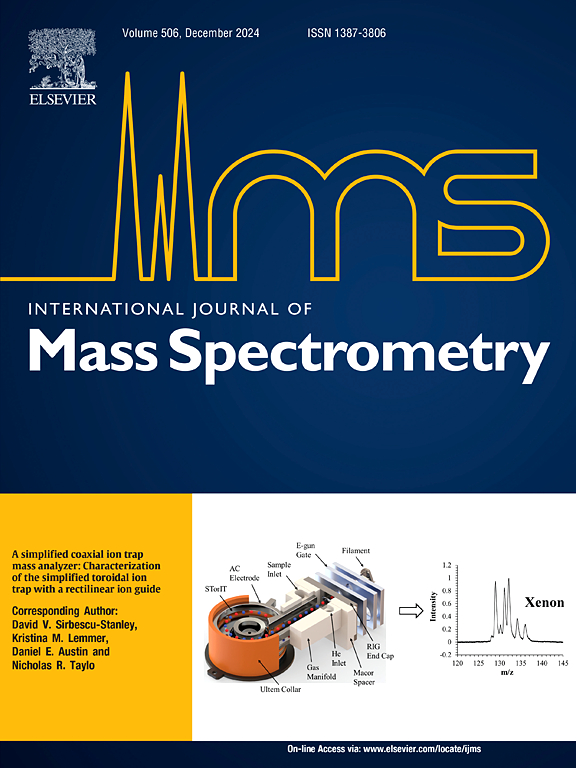An in situ analysis of the components of HTS vapor using a home-made high-temperature time-of-flight mass spectrometer
IF 1.7
3区 化学
Q3 PHYSICS, ATOMIC, MOLECULAR & CHEMICAL
引用次数: 0
Abstract
The aim of this study was to propose the decomposition mechanism of heat transfer salt (HTS or Hitec salt) using a high-temperature furnace coupled with a time-of-flight mass spectrometer (TOF-MS). The decomposition process was systematically investigated in a vacuum environment at temperatures of 45 °C, 80 °C, 150 °C, 200 °C, 220 °C and 280 °C. The thermal decomposition of HTS initiated at and above 200 °C, which was slightly higher than its melting point of 142 °C. The main products resulting from the thermochemical reactions of nitrate/nitrite were NO and N2 respectively, followed by N2O. These findings revealed an unconventional reaction pathways for HTS decompositions as it contradicted the common assumption that O2 or NO2 would be present during this process. These new evidences further support the existence of intermediate species, such as superoxide and peroxide ions, in the molten salts during the initial thermal-chemical reaction process involving nitrite/nitrate salts.

利用自制的高温飞行时间质谱仪对高温高温蒸汽组分进行了原位分析
本研究的目的是利用高温炉和飞行时间质谱联用仪(TOF-MS)研究传热盐(HTS或Hitec盐)的分解机理。在45°C, 80°C, 150°C, 200°C, 220°C和280°C的真空环境下系统地研究了分解过程。HTS的热分解始于200℃及以上,略高于其熔点142℃。硝酸根/亚硝酸盐热化学反应的主要产物为NO和N2,其次为N2O。这些发现揭示了HTS分解的非常规反应途径,因为它与O2或NO2在此过程中存在的普遍假设相矛盾。这些新证据进一步支持了在亚硝酸盐/硝酸盐初始热化学反应过程中熔盐中存在超氧化物和过氧化物离子等中间物质。
本文章由计算机程序翻译,如有差异,请以英文原文为准。
求助全文
约1分钟内获得全文
求助全文
来源期刊
CiteScore
3.60
自引率
5.60%
发文量
145
审稿时长
71 days
期刊介绍:
The journal invites papers that advance the field of mass spectrometry by exploring fundamental aspects of ion processes using both the experimental and theoretical approaches, developing new instrumentation and experimental strategies for chemical analysis using mass spectrometry, developing new computational strategies for data interpretation and integration, reporting new applications of mass spectrometry and hyphenated techniques in biology, chemistry, geology, and physics.
Papers, in which standard mass spectrometry techniques are used for analysis will not be considered.
IJMS publishes full-length articles, short communications, reviews, and feature articles including young scientist features.

 求助内容:
求助内容: 应助结果提醒方式:
应助结果提醒方式:


